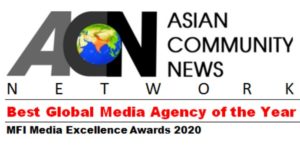Here is Why India edges out Vietnam for alternative investment destination to China – a lesson for dithering Japanese
Authored by an advisor to JETRO, this article is about Japanese dilemma between India and Vietnam for the alternative investment destination to China, despite the fact that Japanese investment in India was twice the investment in Vietnam in 2019. Within Japan, survey outcomes unraveled that the Japanese are in dichotomy.

NEW DELHI. There is much ado between India and Vietnam about the alternative investment destination to China after the outbreak of COVID 19. While a survey by NNA Japan Co – a Japanese based Kyodo News Group – decoded Vietnam as the most promising destination for Japanese investors, Harvard Business Review was assertive to focus India the most potential investment destination for US companies shifting from China. A mega-investment of US $ 5.7 billion in India by Facebook was a case in point, according to the Pew Survey of USA.
Incidentally, the Japanese were in a dilemma. The noted Japanese financial institution (Japan Bank for International Cooperation) elevated India at the top for investment destination for medium-term, leaving behind China and Vietnam at second and third positions respectively, in its survey.
Amidst this paradoxical, Japanese data on investment flow in India and Vietnam evinced a favourable outlook for India. According to METI, India emerged 5th biggest receiver of Japanese investment in Asia in 2019 ( BOP base), leaving behind Vietnam at 6th place. Notably, Japanese investment in India was twice that in Vietnam in 2019. It quadrupled within three years – from the US $ 1.6 Billion in 2017 to the US $ 5.1 Billion in 2019. Against these, Japanese investment in Vietnam crawled to a marginal increase from the US $ 2.0 Billion in 2017 to the US $ 2.5 Billion in 2019. The trend shows the tenet of the Japanese reliance on India’s potential.
Why was it then India was toppled by Vietnam in the NNA survey within two months of the JBIC survey. In popularity and reliability, JBIC is more pronounced since it has been conducting the survey for three decades. What does it connote? Is the JBIC survey more reliable or NNA survey should be trusted to determine the Japanese future plan for alternatives to China?
No doubt, Vietnam has many attractive features: cheap input costs, stable politics, increasingly liberalized trade and investment policies, and its FTA with Japan and other countries. But, It has limitations too. They are its high dependence on foreign inputs for production and exports, limited sectors for investment, the retreat of globalization after COVID 19, and its much smaller population.
High dependence on foreign inputs limits capacity expansion, embodies risks if the political relation rages into confrontation, the retreat of globalization reduces import intensity in production and exports and a small population limits the domestic demand.
 China is the main source of imports of foreign input in Vietnam. More than one-third of Vietnam’s imports come from China. Given the over-dependence on foreign inputs, its gross exports include more of Chinese intermediate goods than domestic products. Eventually, it raises risks for sustainable growth in exports, in the event of any political upheaval. India is a case in point. India’s over-dependence on Chinese components and parts for mobile phone manufacturing caused a big headache for the Government of India. Even though it helped in building a new industry, the bitter political relation between the two countries in the wake of frequent border conflict forced the Indian government to put barriers on imports from China.
China is the main source of imports of foreign input in Vietnam. More than one-third of Vietnam’s imports come from China. Given the over-dependence on foreign inputs, its gross exports include more of Chinese intermediate goods than domestic products. Eventually, it raises risks for sustainable growth in exports, in the event of any political upheaval. India is a case in point. India’s over-dependence on Chinese components and parts for mobile phone manufacturing caused a big headache for the Government of India. Even though it helped in building a new industry, the bitter political relation between the two countries in the wake of frequent border conflict forced the Indian government to put barriers on imports from China.
Another weakness of Vietnam for overdependence on China is that its integration with other Asian countries. Its imports witnessed a downturn from these nations with the increasing imports from China. In other words, Vietnam’s rise in GVC participation rests more on foreign inputs, predominated by China. So far so, it is conducive until the political relation is normal. But, China has lost its integrity as a good trade partner with its expansionism policy. After China defied the Hague arbitration rule, which blamed China’s forceful assertiveness in the South China Sea, the sovereignty of Vietnam is at stake.
Vietnam has limited sectors to attract investment. The target industries are electronics, footwear, and textile. This means firms looking for shifting from China will find to meet only a subset of their needs. This leverages more opportunities in India, which embraces multiple sectors for investment. From the manufacturing of electronics, automobile, and defense equipment to the construction, embodying big investment in infrastructure, India can provide a larger scope for Japanese investment in India.
Domestic demand is another important parameter, which edges out Vietnam. India’s population is more than ten times of Vietnam. Eventually, all’s said and done, investors in Vietnam have to reap the benefit through exports, unlike in India where domestic demand becomes the determinant for sales. Many suggested Vietnam is an alternative to China for the supply chain. But, with the retreat of globalization in the wake of the outbreak of COVID 19, the situation ignited supply chain risk with the disruption in production in the world. It nudged countries to have a second thought on import dependence in GVC model and turn inward for the development of the domestic supply chain. In fact, since 2011 global import intensity to production witnessed a downturn, according to OECD. The reasons were trade tensions, protectionism, and uncertainty in trade policies.
Locked into the quagmire of the retreat of globalization and rise in protectionism, which will be detrimental to GVC by the export base economy, it warrants for a greater risk for investment in the export base economy than in India. India’s new initiative in Make in India is to establish a strong domestic supply chain, focusing on MSME ( Micro, Medium and Small entrepreneurs), with abundant financial support.



